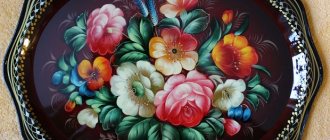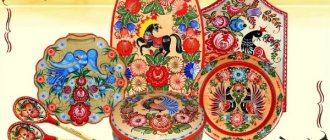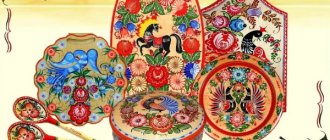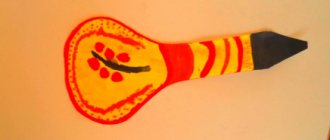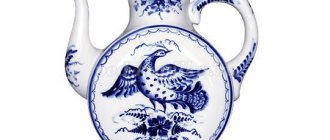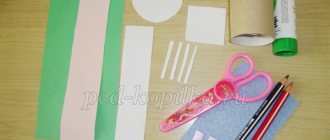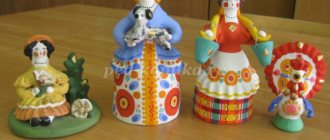Stories about how an obvious failure can take an unexpected turn and turn out to be the key to success are repeated from time to time. And an example of this can be the world-famous Gzhel patterns. In places with infertile soil, which diligent plowmen could not cope with, white high-quality clay was found. And alchemists began to use it, and only then potters. The art of pottery, which originated in the Gzhel region, dates back at least 400 years.
The history of the emergence of Gzhel patterns and ornaments
The word "Gzhel" is the geographical name of several villages 60 km from Moscow, which are associated with easily recognizable white porcelain with blue painting. Gzhel is also associated with the emergence of porcelain itself in Russia, the unique recipe of which D. Vinogradov created specifically on white Gzhel clay. And no less interesting is the history of the patterns and ornaments of Gzhel themselves, so light and laconic, unlike other elements of folk crafts.
For a long time, Gzhel masters were looking for new color solutions, and the familiar white and blue format appeared relatively recently - in the middle of the nineteenth century. Before that, majolica dishes with brightly colored paintings were in high demand. White and blue solutions are a fashion that has come since the times of Peter the Great, and this is due to the painted faience brought from Holland. The foreign idea formed the basis of the Russian craft. It must be said that the Dutch themselves once borrowed blue and white patterns from the Chinese.
Delft faience (Holland)
Gzhel was called “Russian Stafforshire”, but the Gzhel patterns were distinguished by a special message, which was conveyed both in the technique, and in the choice of Gzhel elements, and in their combination. Blue sky, white churches, golden domes - these are elements of Gzhel painting that have become a reflection of the Russian mentality. And they became one of the most recognizable brands of Russian folk culture.
“Acquaintance with the art of Gzhel painting”
MOBU "Secondary school s. Malinovo" joint venture kindergarten.
Notes on drawing for children of the senior group.
Educator: Mikhalchenko L.V.
Topic: “Introduction to the art of Gzhel painting”
Target:
acquaintance with the traditional Russian artistic craft “Gzhel ceramics” and mastering simple elements of painting (straight lines of various thicknesses, dots, grids, borders, droplets).
Tasks
:
Educational:
To acquaint children with the history of the emergence of folk art, to develop the ability to distinguish and name the elements of Gzhel patterns (roses, dots, stripes, nets, wavy arcs)
Summarize children's knowledge about folk crafts: Khokhloma, Gorodets, Dymkovo painting.
Developmental:
develop memory, thinking, creative imagination, expand vocabulary (ceramics, surroundings, Rus', craftsmen, firing, etc.; continue to develop children’s technical skills - skillfully use a brush (paint with the tip of a brush).
Educational:
to cultivate interest in the art of Gzhel masters, to cultivate the ability to evaluate the work of peers, to cultivate a love of folk art.
Integration of educational areas: “Cognitive development” “Speech development” “Artistic and aesthetic development”, Social and communicative.”
Vocabulary work:
Gzhel paintings, figurine, background, pattern, masters,
Preliminary work:
conversations about paintings, drawing based on folk paintings (Gorodets, Khokhloma, Dymkovo painting); asking riddles, reading poetry.
Material:
dishes with Gzhel painting, D/game “Collect the dishes” (“Shards of broken” Gzhel dishes), audio recording of Russian folk songs, samples of elements of Gzhel painting, gouache paints, palette. Gouache blue, white, brushes, napkins, jars of water, sheets of paper in the shape of a plate. Use of ICT.
GCD move:
(a Russian folk melody sounds quietly. I invite the guys to come closer to me).
Educator:
Guys, let's say hello and wish each other a good mood! And we wish the guests a good mood! These are the beautiful and smiling people I invite to class today. Children, do you like to travel? (Children's answers)
Today we will take a journey into the world of beauty, goodness, into the world of amazing creations of folk craftsmen. I warn you right away, it will be not only interesting, but also difficult. So, is everyone ready? And we'll go to
folk craftsmen into a blue-blue fairy tale. And why it is called that, you will understand for yourself (the children sit down, listen to the teacher’s fairy tale and look at the slides)
Educator:
It was a long time ago. In a certain kingdom, in the Russian state, not far from Moscow, among dense forests stood the village of Gzhel. Brave and skillful, kind and hard-working people lived there. And then one day they got together and began to think about how best to show their skills, please all the people, and glorify their land. They thought and thought and came up with something. They found wonderful, white, white clay in their little place, and decided to sculpt dishes the likes of which the world had never seen. They made a teapot and cups, saucers, and sugar bowls. The dishes turned out wonderful... They began to think. How to decorate such intricate dishes? They went home... They walked along the road and looked. And all around there is fabulous beauty, blue is spreading, blue, high blue sky with white clouds, in the distance a blue forest can be seen, the blue surface of rivers and lakes, and a white fog spreading over them. So they decided to transfer this blue to white porcelain. They painted patterns of flowers, droplets, stripes, and nets on the dishes. Each master began to show his ability. One master made a teapot, another a jug (showing works) Gzhel masters are great dreamers. They sculpted various animals and birds. Each artist has his own favorite pattern, and each one reflects the side of his birthplace - its silk grass, its spring flowers. And so it happened that each master pleased everyone with his skill. He taught his children and grandchildren various wisdom so that they would be good masters. Just one paint, but what an elegant and festive painting it turned out to be.
Color scheme of Gzhel painting
Traditionally, the design is done only in shades of blue. Against the background white color of porcelain, the master is able to convey the entire palette of the universe with one color. But blue can be different: from faded blue to expressive deep blue, turning into shades of night. A dark cobalt color is also used. And the laconic Gzhel pattern is completed with platinum or gold decor.
And before that, Gzhel popular print was popular, when the craftsmen painted the dishes with blue, yellow, brown and purple paints, all on the same white background. But the most beautiful handicrafts are considered to be overglaze samples: the craftsman applied colored paints directly over the glaze. After this, dishes or other products must undergo three or even four firings.
Motifs and elements
Depiction of rural life in Gzhel
The theme of the painting is a reflection of the master’s worldview, traditional and cultural understanding of life, its course and main events. Artists can turn to iconographic elements; they capture scenes of everyday life and observations of the natural world.
The subject of the drawing is differentiated into 4 types:
- subject drawing – involves displaying the seasons, landscapes;
- ornamental - these are the usual mesh combs, pearls, as well as tendrils, droplets, layers and checkers;
- plant motifs - berries, buds, grass, branches and cereals;
- animals are usually birds.
Natural motifs and architecture today can often be found on tea sets and other Gzhel tableware. To this day, the masters depict peasant buildings, wide city streets, and churches on their products. Floral designs are also popular: take the same Gzhel rose, which migrated from porcelain to prints on clothes, etc.
Master class on drawing simple Gzhel patterns
Today, elements of Gzhel painting for children and adults are again in demand in various educational products. In the preparatory period, a child learns to draw using stencils, then gradually draws simple elements of painting, recognizing the style and “getting his hand.” But an adult, even someone far from fine art, can learn to do the same.
Sitchik
To work you will need a long-haired thin brush. With this brush, only the tip is used to draw elements.
Let's draw a sitchik step by step:
- Take a thin brush and pick up paint with the tip, using one color.
- Try to draw small details of the ornament based on the model - for example, droplets.
- Small details in Gzhel are characterized by pure color; color transitions are actually not used.
- Make a simple flower from small droplets of the same color, etc.
It is convenient to start learning Gzhel painting using special recipes. Once you have mastered a few rows of basic sitchik movements, the skill will become automatic.
Chinese smear
This technique is perhaps the most interesting, but also the most difficult to perform.
Step-by-step algorithm for the Chinese stroke:
- On a thin brush you need to pick up two colors at once. You can use one, but you still need to pull the brush along the pile when drawing.
- The element is performed continuously, the color saturation will fade as the stroke is completed. This method creates a subtle color transition that looks as natural as possible.
- Next, the master picks up the paint again, and again watches how, as the element is removed, the paint fades and becomes softer.
Brush painting produces beautiful flowers that are recognizable in the Gzhel technique. You can also practice writing them on pre-ruled paper. First, the petals are drawn separately, then the central elements of the flower, and finally, the whole flower.
Stroke with shadow
Some sources claim that this is a type of “Chinese”. This basic movement of Gzhel elements has a wide tonal range. The deepest and darkest tones are taken, but gradually the lightest and lightest ones “interfere” into the matter. The paint will have to be applied to the surface in a circular motion.
Step by step it looks like this:
- Put paint on the brush - there should be more of it on the edge of the brush, and less in the middle. For this purpose, use thick brushes No. 8 or No. 10, with blunt “spatulat” ends.
- Carefully place the brush on the paper, and with a confident movement of the hand, draw a line, straight or wavy, according to the intended element.
- The most favorite and best pattern for training is the Gzhel simple rose. To perform it, brushes No. 6 and No. 8 are used. Painting the flower begins from the middle, after which two strokes are applied on the left, and then two strokes on the right. During training, it is convenient to first apply a smear in one direction, then in the other.
This video clearly shows how to properly make shadow strokes.
And one more important point. Often elements and basic movements do not work out well because the student is holding the hand incorrectly. The brush must be held in your hand with three fingers: thumb, index and middle. The direction of movement of the hand should be set by the middle finger.
Organized educational activities in the senior group “Fairytale Gzhel”
Goals:
1. Introduce children to the art of Gzhel masters; contribute to the development of aesthetic taste and imagination. Stimulate the desire to create beauty with your own hands.
2. To develop practical skills and drawing skills. Teach children to make a pattern based on Gzhel painting. Improve your skills in working with paints. Strengthen the skill of drawing with a double stroke.
3. Cultivate interest in the art of Gzhel masters. Develop qualities such as perseverance, attention, and accuracy when working with paints. Give children the opportunity to feel like a folk craftsman.
Equipment:
- objects of folk applied art “Gzhel” (plates, cups, teapots, etc.), postcards, reproductions, tea set stencils.
- border painting samples
- audio recording.
Progress of organized educational activities:
Today, guys, our lesson is dedicated to “Fairytale Gzhel”. But I will tell you not a fairy tale, but a true story.
It was a long time ago. In a certain kingdom, in the Russian state, not far from Moscow, among dense forests stood the village of Gzhel. Brave and smart, kind and hard-working people lived there. For a long time they made dishes from white clay. And then one day they got together and began to think about how best to show their skills, to please all the people and glorify their land. We thought and thought and came up with an idea. We decided to sculpt dishes the likes of which the world has never seen.
Each master began to show his ability. One made a teapot: the spout was in the shape of a cockerel’s head, and there was a chicken on the lid.
Another master looked and marveled, but did not sculpt the teapot. He saw a bull on the street and sculpted it.
The third master marveled at such beauty, and he himself came up with an even better idea. He made a sugar bowl in the shape of a fabulous fish. The fish smiles, waves its tail, and shakes its fins. The sugar bowl turned out wonderful.
We began to think and think further. How to decorate such intricate dishes?
We went home. They walk along the road and look. And all around there is fabulous beauty, the blue is spreading: a high blue sky with white clouds, a blue forest can be seen in the distance, the blue surface of rivers and lakes, and a white fog spreading over them.
So they decided to transfer this blue to white porcelain. And everything that the brush paints becomes blue and cyan. And flowers, and people, and birds, and grass.
People fell in love with the elegant tableware, and they began to affectionately call it “Gentle Blue Miracle - Fabulous Gzhel.” Gzhel craftsmen glorified their beloved region throughout the world and told everyone what skilled craftsmen live in Rus'.
The ancient town of Gzhel is still alive today. The grandchildren and great-grandchildren of famous masters work there, continuing the glorious tradition, sculpting and painting amazing Gzhel dishes.
— Russian painter B.M. Kustodiev said that Gzhel teapots and cups bloom with “magical blue flowers.” Indeed, the famous blue flowers, leaves and buds on a white background are an exceptional Gzhel tradition that cannot be found anywhere else in the world. The distinctive style of painting with cobalt (blue paint) uses thirty different shades: from an almost transparent light blue to a rich dark blue. But shades of color appear only after firing; in its raw form, the cobalt design looks gray-black.
It's hard to believe: is it really
Just two colors? Miracles!..
This is how artists from Gzhel
The skies are putting snow on it!
L. Kulikova.
— Perhaps the most favorite pattern is the Gzhel rose. Sometimes it is depicted large, with broad strokes. And sometimes, it is written with a thin brush. Either we see a bouquet of several roses, or flowers are scattered across the entire surface.
What roses and peonies
Masters write on the cups.
And blue and white buds
As beautiful today as yesterday!
L. Kulikova.
— Curls, arcs, meshes, stripes, blades of grass, and dots are used.
— They often depict fairy-tale animals and birds. On large pieces you can often see a landscape.
Porcelain teapots, candlesticks, clocks,
Animals and birds of unprecedented beauty.
The village in the Moscow region has now become famous.
Everyone knows its name - Gzhel.
I. Kadukhina
— Gzhel masters use an unusual brushstroke for painting: “a brushstroke on one side” or “a brushstroke with shadows.” It shows a gradual transition from light to dark.
Question:
What is decorated with Gzhel patterns?
Answer:
Flower vases, teapots, sugar bowls, cups, saucers, tea sets.
Teacher:
And now you and I will also visit a fairy tale and feel like real Gzhel masters.
Question:
And which of you will say what a service is?
Answer:
This is a complete set of tableware or teaware, designed for a certain number of people.
I have a set of tea sets (the children name the available models for coloring), but they are only white, not painted. Can you help me paint them?
And so that your work goes well and continues, I’ll play some music for you. After all, music inspires and encourages creativity.
In the process of independent work, children are given complete creative freedom and individual assistance is provided. At the end of the lesson there is an exhibition. The children place their toys on a special stand and together admire the fruits of their labor. The main thing is not to forget to praise each work, to note in the toy what was best done.
You did a great job. I see that you are truly skillful guys! You will grow into famous masters and craftswomen!
Dark blue miracle, nightingale trill.
You have sunk into everyone's soul,
Our Russian Gzhel.
